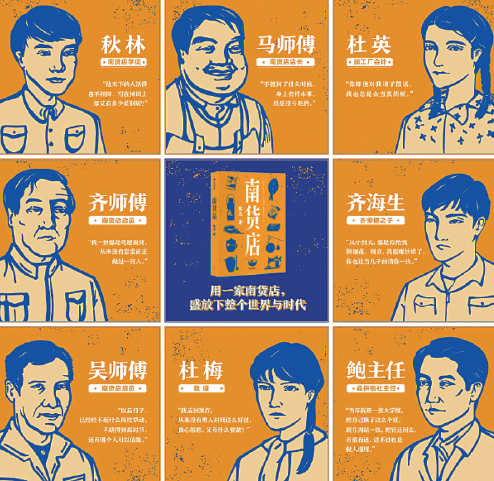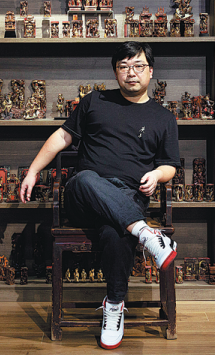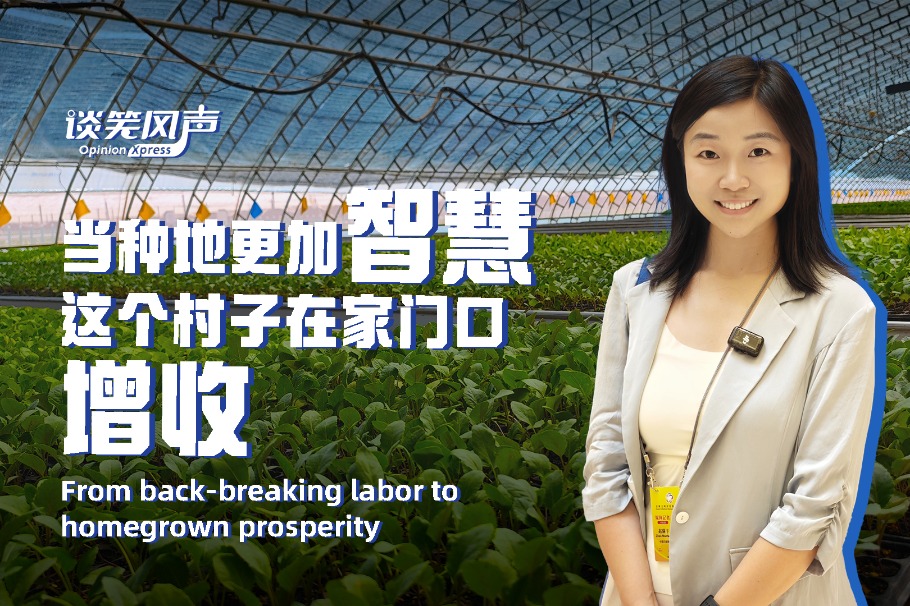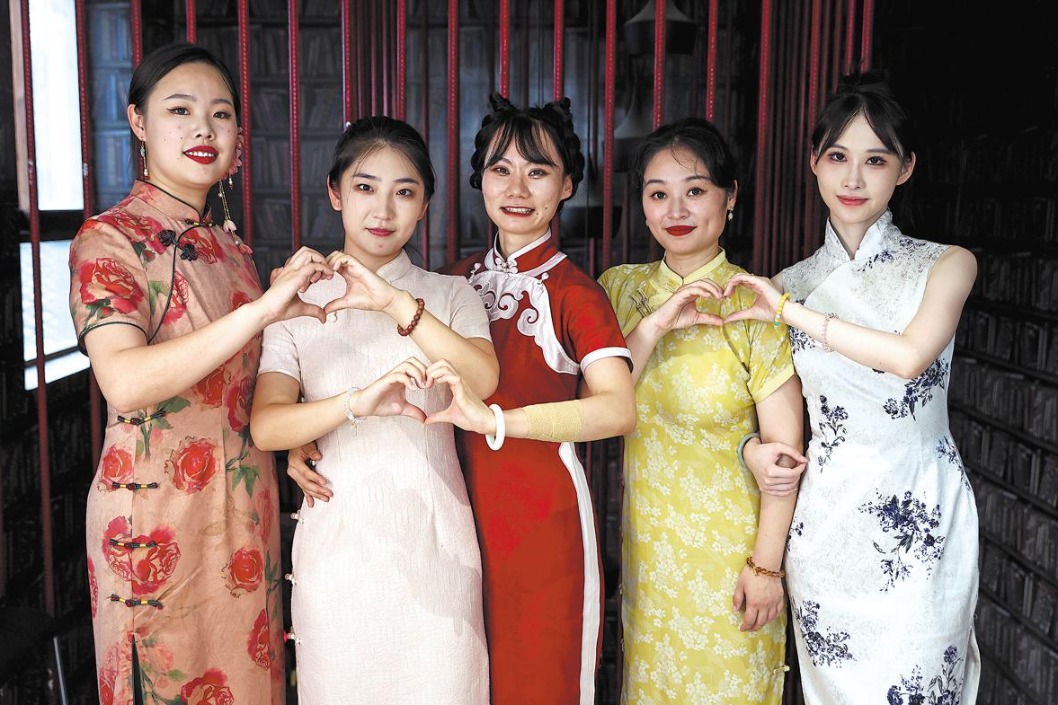Apportioning nostalgia
Acclaimed novel delves into China's not-too-distant past to tell the stories of ordinary people at an extraordinary period in the nation's development, Xing Wen reports.

The role of gongxiaoshe, or China's rural-area supply and marketing cooperative, as the outlet for people to exchange corresponding ration coupons for goods in the planned economy era has long since faded into people's memory.
However, the novel, Nanhuodian, (roughly translated as "the shop that sells goods produced in the South"), published this year, has re-created the lively scenes found at gongxiaoshe outlets in a dramatic, and somewhat fictionalized, account of this oft-forgotten period.
From the early 1950s to the late 1980s, or roughly the period known as the planned economy era, when manufacturing and distribution of products were decided purely by government, the public's ability to purchase goods was based mainly on a variety of ration coupons, limited in quantity and issued by authorities for rice, flour, oil, seafood, clothes and soap, among other things. Back then, gongxiaoshe was the place that people were able to make these exchanges and it played an essential role in everyone's daily lives.
The novel tells the stories of different people from the perspective of its protagonist, Lu Qiulin, who works his way up from being an apprentice at a village shop to become the manager of a county-level specialty company within the rural cooperative system of gongxiaoshe between the 1970s and the 1990s.
On Dec 10, the book was listed by the country's National Press and Publication Administration as one of the 15 outstanding realistic publications of the year.
What motivated the author Zhang Ji, 40, to write the book was his curiosity about his grandfather's life.
In 2016, at his grandfather's funeral, Zhang's father told him some stories about the departed that he'd never heard before. Zhang realized that he didn't know much about the lives of people who he is closely related to.
"That's when I decided to write the novel, to probe into the experiences of the previous generations of my family," recalls Zhang.
"Many young people today are not familiar with gongxiaoshe, which was an important aspect of China's planned economy era, and therefore the life of the last generation," says Zhang, adding that stories related to the system provide a glimpse into the China of yesteryear.
To gather raw materials for the novel, he talked with his father who was once a salesman at such a cooperative outlet, and interviewed many elderly people to learn more about the operation of the gongxiaoshe system and the working practices of its staff members.
For instance, when selling liquor, the salesclerk should softly dip the ladle into the jar at a low angle, rather than drop it straight into the liquid, as the latter might stir the wine, agitating the lees and other deposits at the bottom of the jar, which the customers wouldn't like.
In Zhang's book, he gives a detailed description of how a salesman skillfully calculated items with an abacus he held aloft by resting it on the top of his head. He also writes comprehensively about the speed at which those working at the outlet rolled or cut cloth to be sold and folded wrapping paper into the different shapes required to pack white sugar, red dates, dried longan and other loose ingredients.
As an apprentice in the book, the character Lu is told by an experienced businessman of a superstition whereby when sweeping the floor, one should hold the broom toward inside of the shop, which would bring good fortune.
The way people arranged their lives and work, and the local customs in the Jiangnan area-south of the lower reaches of the Yangtze River-have been given a vivid account in Zhang's book, which is written in the local dialect of Ningbo, Zhejiang province.
Additionally, much ink is employed in the novel's descriptions of local food and its preparation, such as how to salt fish with pure sodium chloride, how to cook pork with pickled vegetables and how to stew an appetizing seafood casserole.
Zhang says that people who lived in the 1970s would care a great deal about the number, texture and quality of certain goods, when food and other commodities were scarce and hard-earned. For example, instead of buying a pack of cigarettes, smokers would have to buy one cigarette or a handful at a time; when they bought sugar, they'd have to have it weighed on the spot and wrapped with paper.
"In those days, the amity between people was carried by food," says Zhang, adding that people felt a deeper bond with the precious food that was available to them, arguably cherishing it more than people do today, and would often love to cook for friends at home, instead of dining in restaurants.
Personally, the author loves "descriptions of eating food", in literature. "I believe the changes of time are hidden behind the trifling details of people's everyday lives, such as food," Zhang adds.
Separately, the novel, with a plot and stories spanning some two decades, also shows how ordinary people fared during the changes brought about by the launch of China's reform and opening-up in 1978.
"Not all of them could cope with the changes effortlessly; many were at a loss as to what to do back then," says Zhang.
In the novel, a woman named Du Mei is a tailor who does fine work and is popular with her customers in the town. However, with the surge of clothing manufacturers in the 1990s, the influence of tailors gradually diminishes and Du is left feeling lost and confused.
The author holds that the woman's confusion was probably shared by many people at that time. "To some extent, I want to write the biographies of ordinary people," Zhang adds. "In the novel, each individual character has a story worth telling."
Lin Peiyuan, a friend of Zhang and a fellow author, comments that the novel provides a strong flavor of town life back then and offers an air of nostalgia that will take readers back to bittersweet days of the 1970s and 1980s.
"When reading the book, people will find that Zhang has carried on the tradition of such classical Chinese novels as Wu Jingzi's The Scholars and Cao Xueqin's A Dream of Red Mansions," says Lin.
In Zhang's novel, the story of each staff member in the shop-and even each of their family members-is told, weaving a web of tales that creates a wider picture of society at that time.
"The novel introduces the origins of each character and deals well with the multifarious connections that link them all," Lin says.


Today's Top News
- China to open its door to foreign investment wider
- China criticizes Canadian tariffs on products containing Chinese steel
- US legislative chaos undermines its democracy
- Why China is irreplaceable in supply chain
- China's FDI inflow tops $700b since 2021
- Australia, China set to bolster steel partnership






























